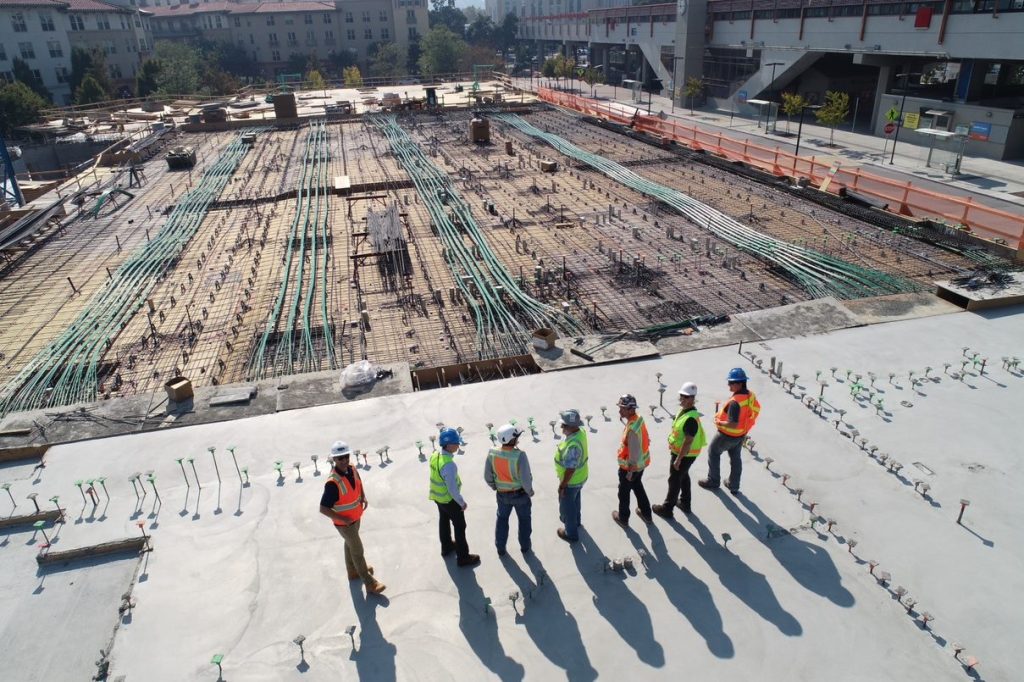A common theme across articles about BTR design best practice is technology and how it can benefit the owner, operator, and residents.
It’s not difficult to see why it’s such a popular topic, with so many developments highlighting connectivity as one of the most important factors in improving customer retention and satisfaction.
However, few touch on the risks of poor initial planning around technology deployment and how to mitigate those risks.
This article will uncover common problems that can occur if best practice is ignored and suggests how to avoid them so that the deployment of technology itself runs smoothly.
It is surprising that, even today, poor technology planning occurs so frequently.
Why does it happen?
Sometimes it can be down to a lack of clarity around roles and responsibilities between the broadband provider, the lead designer and M&E contractor.
Often it is due to cost cutting on the part of the main contractor or M&E consultant.
However, it can also simply be a case that the decision maker does not appreciate the importance of technology on the long-term value of the asset.

Technology planning is an essential part of design. PIC: Daniel McCullough
It’s only broadband. Water, electricity, and gas are all far more important!
Examples of poor planning can include:
Cost saving/deprioritising
- Comparing technology against other utilities: “It’s only broadband. Water, electricity, and gas are all far more important.”
- The choice of partner. For example, the M&E consultant has a partner in mind who may not be a specialist in the end-to-end provision of a managed internet service.
- Not choosing the right partner, perhaps due to the attraction of “free of charge” infrastructure (for example from Virgin or BT) against owning the technology asset outright.
- Not involving the chosen provider sufficiently early or leaving the planning of connectivity until later.
Lack of understanding of:
- The influence technology has on the operation of the building, for example using copper Ethernet cables instead of fibre optics at the expense of a future-proofed solution and better service capability.
- The importance of technology on tenant retention.
- The complexities of implementing and managing the service, including a lack of appreciation of the timescales of ordering a fibre circuit to the property.
Ambiguity around who is responsible for what:
- Who provides and installs what, in terms of cabling, hardware, containment and ducting, for example?
- Who ensures standards are complied with, and maintained?
- Who tests and ensures quality of work?
The consequences resulting from poor technology planning can include:
- A delay to practical completion. The PC date can be impacted, and costs can skyrocket as a result. For example, failure to consider connectivity requirements for door access control may introduce delay for additional cabling after first fix and have a subsequent knock-on effect on delivery of the building.
- Poor technology performance. The resulting service fails to meet expectations, leading to low customer satisfaction, and increasing resident churn. Perhaps the Wi-Fi coverage is patchy due to a poor initial Wi-Fi survey. Retrospective works required to resolve this could mean additional access points need to be installed which may stretch an already tight budget.
- Higher costs deter future investment. Investors won’t be willing to commit to future developments if operating costs are too high. This can happen if the technology or the commercials are wrong. On the other hand, choosing the correct technology can have a positive impact on operating costs, such as implementing energy metering or water temperature measurement to minimise reliance on third parties. In short, lower operating costs have a positive impact on the value of the asset.
- Cost of remedial work. Incorrect cabling standards, poor firestopping, or an inadequate Wi-Fi survey can all increase the likelihood of further project costs later. In addition, any retrofit activity where cabling needs to be re-run, or trunking replaced, can cause inconvenience for tenants and affect a building’s aesthetics.
- Safety issues. Any disregard for stringent planning can cause compliance or health and safety issues, for example using non fire-rated cabling, mistakes with firestopping, etc. It would be prudent to reference design of all new residential buildings against the Building Safety Bill to avoid potentially catastrophic consequences of non-compliance.
- Negative impacts on ESG. By undertaking sound technology planning, attention can be paid to the best infrastructure for optimum energy usage.
Any one of these problems will place a burden on the owner and main contractor.
Who is the target market and what are their expectations for broadband? Will they be homeworkers? Do they need data points for plugging in their equipment?
The following factors need to be considered at design stage
Understand the resident’s expectations
- Who is the target market and what are their expectations for broadband? Will they be homeworkers? Do they need data points for plugging in their equipment?
- Do they need “full coverage” and what does this look like? For example, coverage in lifts, car parks, amenities, etc. This will impact the overall resident experience and increase retention. The distribution method of access points and Wi-Fi 6 capability should be considered.
- Bandwidth speed and symmetry requirements. Providing different speed options and having the same upload and download speeds can really affect the customer experience. This choice depends on which underlying network infrastructure is chosen. You may want a gigabit now, but will that be fast enough in five years’ time?
- Reliability. Everyone wants Wi-Fi to work all the time. Poor planning will cause issues such as signal interference between access points or Wi-fi routers.
Understand the needs of the building operator
- Tenant mobility. Resident turnover is a part of BTR life, so there is a requirement to easily and quickly re-provision and reconfigure Wi-Fi access. In addition, when a tenant moves out, the Wi-Fi hardware needs to remain in the property. The type of Wi-Fi installation deployed will affect these factors.
- Onboarding residents. What systems are available to aid customer onboarding? To what extent does the operator need to be involved in this process? Can tenant management software automatically enrol residents on the broadband as they come and go?
- Today’s buildings have multiple and connected third-party services such as CCTV, building management system, and energy metering. The network infrastructure needs to support these services. There may not be a need for some of it today, but that doesn’t mean there won’t be in the future. Thought needs to be given to what “may” be installed longer term and whether the chosen technology infrastructure supports this, for example installing a CCTV system over a 2-pair copper network and expecting 4K UHD quality viewing.
- Are there any requirements for white labelling the broadband service so that it appears to be provided by the owner/operating company?
- From the perspective of the owner/operator, how important is it to provide an exceptional broadband experience, for example, are they seeking a WiredScore accreditation?

Getting fibre to site should be considered part of the infrastructure. PIC: Scott Blake
- Technology is not just about providing fast Wi-Fi. The latest standards should be adopted, if possible. Also, consider the presence of the network and how it can benefit other building services.
- Long term functionality and usability of the building is key. Getting the right infrastructure in place, and delivered to the correct standards, is vitally important.
- ESG requirements and maintaining low operating costs are extremely important in securing future funding.
- Implementing the correct technology will have a direct and positive impact on tenant retention. This process starts with the correct choice of technology partner.
Understand the requirements of a managed internet service
- While the managed service is dealt with by the operator, getting fibre to the site itself should be considered part of the infrastructure.
- If it isn’t, this can cause delays at PC or, at worst, increase capital expenditure for re-excavating ground to install duct work when land is closed. The location of the main “meet me” pit to needs to be planned to ensure a successful deployment of services.
- Have network backup and resilience options been considered? Good technology planning practice will take account of secondary fibre routing and uninterruptable power supplies.
Consider the importance of future-proofing the property
- Any owner/operator wishing to provide the latest technology in five years’ time should be considering the deployment of fibre-optic cabling throughout their building.
- Wi-Fi standards are constantly being improved and updated. The choice of infrastructure will dictate how long the network will be able to maintain a service that meets tenant expectations.
- As interest in IOT capability grows so does the requirement for a robust and reliable fibre backbone to support additional management services.
Consider the potential impact on the environment along with any sustainability benefits
- An understanding of any ESG requirements will influence technology planning. For example, energy metering and water temperature monitoring will bring efficiency benefits and cost savings. If the underlying technology installed doesn’t support these kinds of applications, ESG targets may not be met.
This article has noted the problems that can occur when there is a lack of planning around the implementation of building technology and connectivity and outlined the ways in which these can be overcome.
The bottom line is that it is critical to plan properly for a technology deployment.
Partnering with an established managed service provider is the best way to alleviate the problems we’ve outlined. Please feel free to contact us at [email protected].